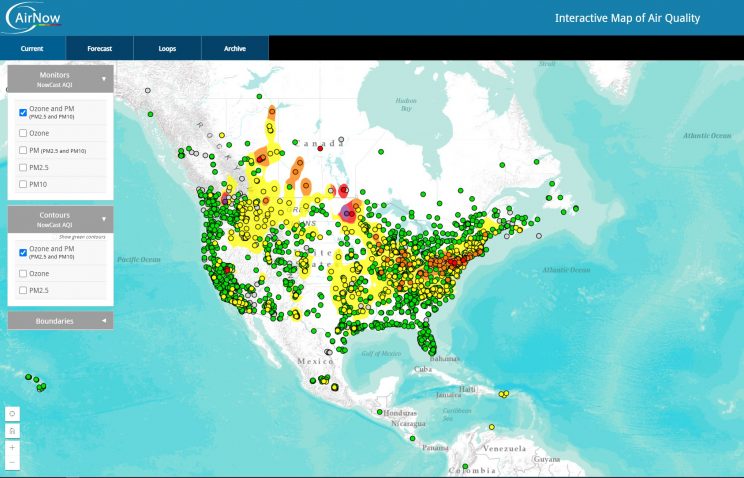NOAA Upgrades Key Air Quality Prediction Model
Air quality forecasts not only offer longer term guidance – 72 hours – but also improve ozone forecasting
July 20, 2021
NOAA’s Air Resources Laboratory (ARL) has delivered significant updates to the Air Quality Model that NOAA’s National Weather Service uses to deliver air quality forecast guidance. NOAA’s partnership with the Environmental Protection Agency (EPA) issues daily air quality forecast guidance as part of a National Air Quality Forecasting Capability. These forecasts include information such as the levels of ozone (O3), smoke, dust and fine particulate matter (PM2.5) in the air we breathe.
As of July 20, 2021 there is an improved time range of air quality forecasts; NOAA’s air quality forecast guidance now extends from 48 hours out to 72 hours. These forecasts offer essential information that limits the public’s exposure to poor air quality and its harmful health effects. Extending the forecast capability to 72 hours assists local forecasters with planning for weekend and multiday event air quality alerts.
One key upgrade is to the source emissions input to the model. ARL scientists enhanced the operational air quality capability by updating the emissions to reflect current inventories. Other enhancements incorporate scientific advances not only in meteorology but also in the interaction of the air and Earth’s surface to better represent critical physical processes. As a result, this model generally improves the accuracy of ozone prediction, a key measurement of air quality, particularly over the Eastern US.
Wildfire impacts on air quality are extensive, and this model incorporates more variables to assess their contribution to air pollution. NOAA’s National Environmental Satellite, Data, and Information Service (NESDIS), along with ARL, modified the NESDIS Global Biomass Burning Emissions Product (GBBEPx) to provide near-real time fire smoke emission inputs into CMAQ. Now, the source of the wildfire – such as deciduous or evergreen forest – is considered, along with the radiative power of the fire to inject particulate matter (PM2.5) in the atmosphere.
The engine of the model will shift from the North American Mesoscale Forecast System (NAM) and will now be driven by the recently upgraded Global Forecast System (GFS), which continues to be actively developed and improved as a part of the Unified Forecast System (UFS). CMAQ (see-mak) is an active open-source development project led by EPA that consists of a suite of programs for conducting air quality model simulations. CMAQ combines current knowledge in atmospheric science and air quality modeling, with computing techniques and an open-source framework, and delivers estimates of ozone, particulates and pollutants.
Although air quality in the US has dramatically improved over the last 30 years, it is still an important topic and public health concern. Research has shown that poor air quality disproportionately affects underserved and vulnerable populations. In the US alone, annual mortality from air pollution contributes to 100,000 premature deaths, which far exceeds the annual mortality of about 500 from all weather events combined in the United States. Moreover, US air quality is likely to deteriorate in the future as a result of increased wildfires and other climate-related factors.
More information on these improvements is available from the National Weather Service.


